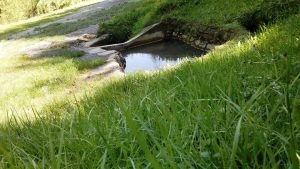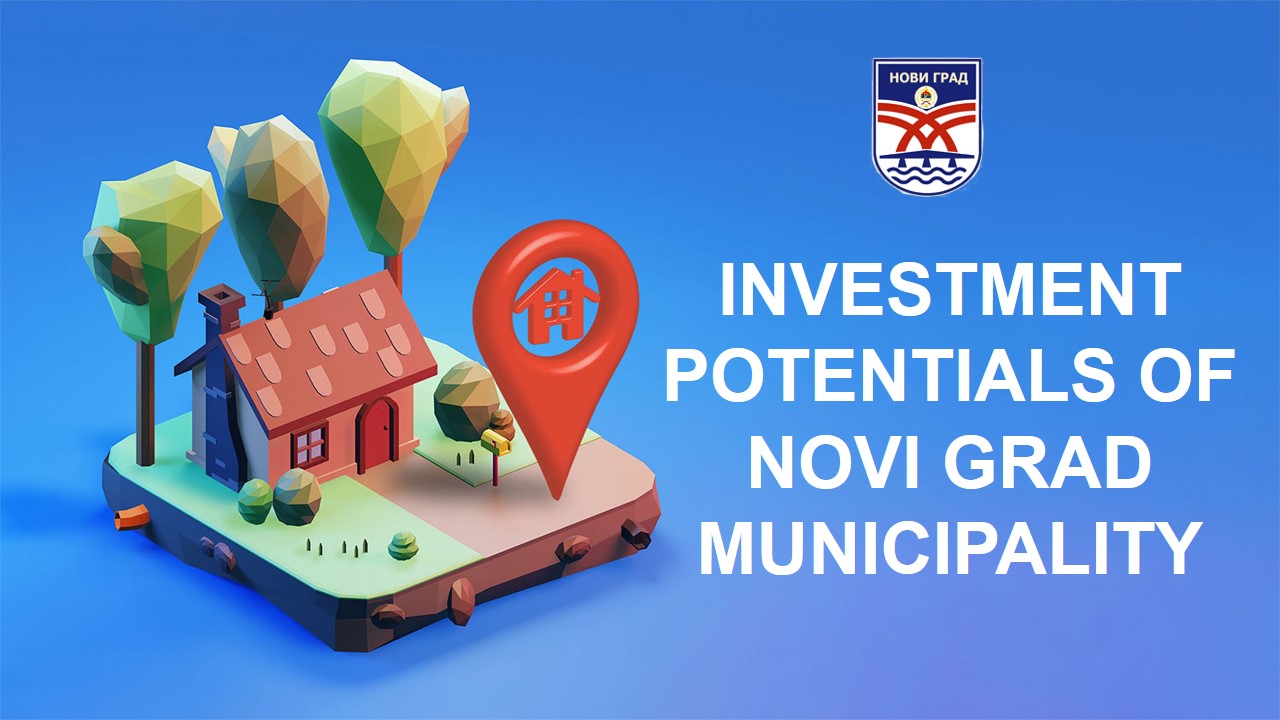Investment Sectors
WOOD PROCESSING SECTOR:

Ligno-progres, doo
The wood processing sector in Novi Grad municipality has a long tradition. In the period after WWII, the wood industry was the backbone of the development of the municipality, mainly because of an easily accessible and high-quality raw material base. Currently, in Novi Grad municipality operate companies whose primary production is based on primary wood processing and whose raw material base is shifted towards assortments of a lower thickness class and lower logs quality. The basic advantages of this branch of industry are high quality of products and services, highly qualified and low-cost workforce, the geographic position that allows fast response to market demands as well as other demands and requirements, significant industrial capacities that are well distributed throughout the municipality, long tradition, industrial culture and a good reputation across the world.
Ores and minerals:

Dolomite mine “Blatna”
Mineral ores of the proven potential are insufficiently exploited. Confirmed reserves of the ores include 12.7 million tons of crude gypsum, 54.5 million tons of dolomite, 22.0 million tons of lignite, substantial quantities of sand and 14.1 million tons of stone. The ores represent a solid base of raw materials for the production of final products in construction, cement, and other industries.
AGRICULTURAL SECTOR
The agricultural sector is a vital segment of a domestic economy that is characterized by certain comparative advantages such as excellent combinations of natural and climatic resources which benefits almost all types of agricultural production.
Farming

Wheatfield, www.facebook.com/agrojapra
In the area of Novi Grad municipality, farming production occupies around 9.000 ha with corn production as largest with around 2.100 ha. There are also significant surfaces of agricultural areas under barley, oat, wheat, triticale, and fodder plants. Farmers are supported by municipal and state incentives with an annual amount of around 50.000,00 EUR.
Vegetable growing

Seedling nursery “Čulić”, www.facebook.com/rasadnikculic
In the area of Novi Grad municipality, vegetables are being grown on around 1.500 ha. The most commonly grown culture are paprika, bean, onion, cucumber, melons, watermelons, and potato. Novi Grad The municipality supports outdoor vegetable productions through agricultural production incentives.
Fruit growing
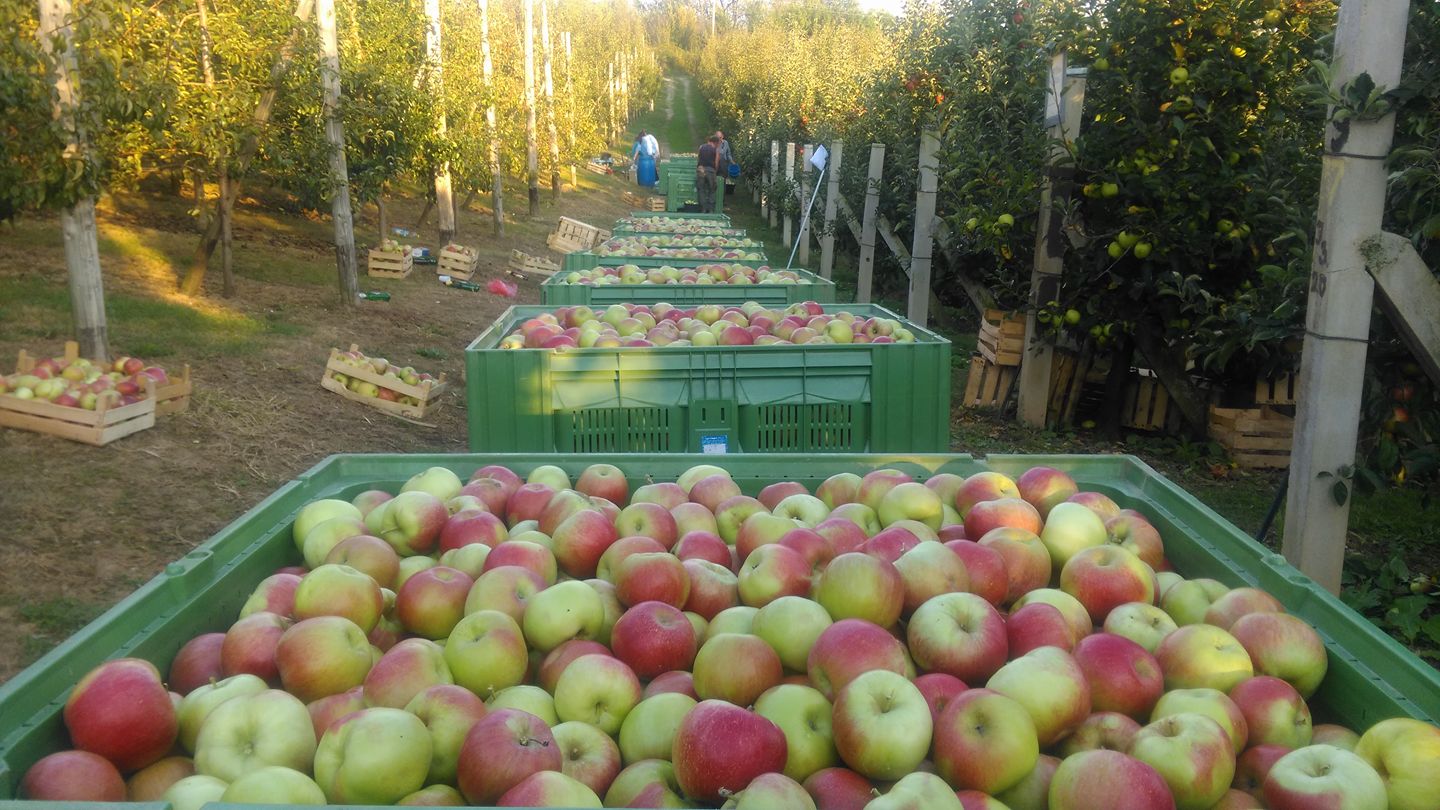
Apple orchard, www.facebook.com/voceknezevic
This is the most profitable branch of agriculture in the area of the municipality. It requires the greatest investments in new technologies especially in fulfilling quality standards. Estimations of surfaces under intensive fruit growing are around 20 ha ( apple and pear). Besides apples and pears, plums, hazelnuts, and walnuts are also grown. There are also grown various types of berry fruits from which is the most interesting growing Aronia which is certified as organic production, as well as growing of blueberries.
Livestock breeding

www.krajiskisir.com
Dairy production is the most important branch of livestock breeding in the area of the municipality since it has the greatest share of income of individual farms. Quality nutrition as well as good genetic are basic preconditions for achieving good results in this branch of agriculture. This production is continuously developing thanks to the existing network of milk collectors and milk processors as well as agricultural incentives. The amount of incentive for beneficiaries with standard milk quality is 0,13 EUR/l. In 2019. within the area of Novi Grad municipality is collected 4.366.654,00 l of milk from 127 producers.
Beekeeping

Bee products, www.facebook.com/opstinanovi.grad
Beekeeping is one of the most perspective agricultural branches of the municipality while climatic and geographic conditions benefit its organization and development. Within the territory of Novi Grad municipality operates 10 companies that produce beekeeping equipment from which most of them are export-oriented. In the register of beekeeper form, the area of Novi Grad municipality is recorded 62 individual beekeepers with 3457 beehives. In early September this branch of agriculture is promoted in the form of the festival “Days of beekeeping, fruit growing, and countryside” where beekeepers have the opportunity to present their products.
Cooperative sector
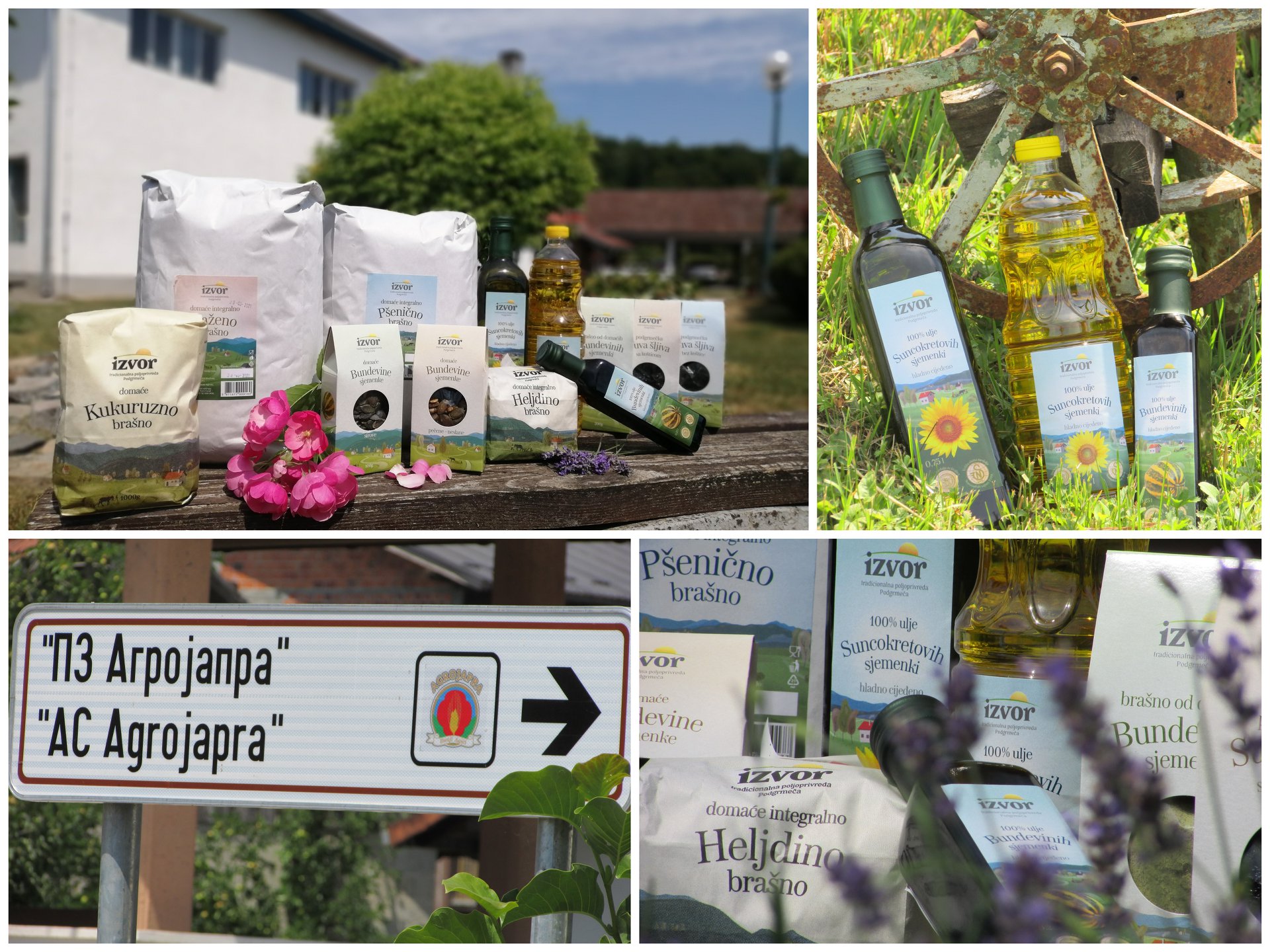
AC “Agrojapra”
According to the Agency for Intermediary, IT and financial services of The Republic of Srpska on the territory of Novi Grad municipality operate 6 cooperatives. Union of cooperatives of the Republic of Srpska has the most productive cooperation with, Agrojapra” cooperative as one of the most active and most successful in the area of the municipality.
Agri-food sector:
Agri-food sector has great potential – great human and natural resources as well as a long tradition. It has the potential for a significant increase in sales, export, and new employments. It has a solid business operation performances even it is mainly oriented to the domestic market rather than export. The main advantages of this branch of the economy are rich raw materials base (fertile agricultural soil, climatic conditions, good industrial/processing capacities in agri-food sector), natural resources (the structure of agricultural soil, waters, biodiversity, etc.), human resources. The agri-food sector should be developing in following directions: strengthening the production and economic performances of the sector, implementation of global standards and use of new technologies, production of healthy food, greater investments, and more operational financial supports for startups. Main products of the agri-food sector: food products, beverage production, production of bread, fresh pastries and cakes, production of macaroni, noodles, couscous and similar products made of flour, edible oil production.
TEXTILE SECTOR:

“Vastil”, doo
The textile, leather, and footwear industry is a heterogeneous activity that produces different products, semi-finished products, and materials for further processing and which encompasses the following: production of the textile yarns and fabrics, garment production, finishing works and fur dyeing, production of leather, leather goods, and garment. The textile industry of Novi Grad municipality has a long tradition, qualified workforce, recognizability, and possibility for further expansion of the production. The basic characteristics of the sector are high quality of products and services, highly qualified and low-cost workforce, the geographic position that allows fast response to market demands as well as other demands and requirements, significant industrial capacities that are well distributed throughout the municipality, long tradition of the textile industry, industrial culture and good reputation across the world.
TOURISM
Novi Grad is located in the far northeast of the Republic of Srpska, in the border part with Federation BiH and Croatia, and is one of the oldest and most picturesque Krajina towns on Una River.
This was one of the biggest railway and road traffic hubs in former Yugoslavia (the first railway in Bosnia-Herzegovina was built in 1873 – Dobrljin – Banjs Luka railway which now connects the Republic of Srpska, Croatia, Federation of BiH, and wider. Novi Grad is 135 km away from Zagreb, 90 km from Banja Luka, 320 km from Sarajevo and 396 km from Belgrade.
The natural potentials of the municipality include the thermo-mineral spring Lješljani, rivers Una and Sana, with tributaries where are organized sports and recreational activities on water and various events (the most important is the “International Una boat regatta down the Una”, cross-border project of BiH and Croatia, which has been held since 2012).
The source of thermo-mineral water Lješljani

Photo by Mladena Bolta, www.facebook.com/BoltaPhotography
Surrounded by hills and meadows filled with deciduous and evergreen trees, this pearl of nature is located at a distance of 18 km from Novi Grad in the north-western part of The Republic of Srpska.
The healing properties of “Lješljani ” were discovered in the Roman period, and the proof of its oldest application dates back from 1878. When the Austro-Hungarian miners first tested this mineral water in Vienna. Numerous legends among the locals are evidence about the multi-use of healing waters in the treatment of various forms of illness, one of which is bound to the extraordinary discovery of the healing properties of this spring.
Locals believe that the discovery of healing waters is bound to an anecdote of a local, which occurred in the distant past. The villager left its sick horse, because of the inability to find a suitable remedy to give him, in the forest of Potkozarje. However, after a few days of bathing and staying in the healing mud of “Lješani” the horse returned completely healthy.
Scientific analyses, which confirmed the people’s beliefs, were conducted in 1990 by drilling deep up to 672 m. Research has shown that the amount of water is nine liters in a second, and constant temperatures from 31 to 35 degrees Celsius. These characteristics have not changed until today. Natural water from the spa belongs to sodium chloride, hydrocarbonate, hypothermal alkaline water with a PH value of 11.85. This miraculous water cures increased gastric acid, ulcer, bile disease, and bile passages, affects the reduction of cholesterol in the blood, and facilitates pain due to rheumatism and vein disease.
A recent investigation of gases and isotopes in hyperalkaline waters of B&H in 2016, conducted by the National Institute of Geophysics and Volcanology of Italy in cooperation with the Federal Geological Survey-Sarajevo has shown that the methane in Lješljani deposit is produced in the serpentinization processes of peridotites (Etiope et al., 2017). Lješljani aquifer has the highest CH4 concentration (2706 µM) and pH (12.8) ever reported so far in peridotite-hosted hyperalkaline waters (Etiope at al., 2017). The water of this deposit occurs on two springs and a drillhole SB-1 (672 m) with a total yield of about Q≈7 l/s. This water is characterized by Cl-OH-Na type, high conductivity EC=3,98 – 5,18 mS/cm, water temperature 13,1-30,5°C and pH=12,0 – 12,8, as well as CH4 (with its higher homologues) and N2 free gasses composition. Waters issue from outcrops of tectonized greywacke sandstones of volcanic sedimentary (diabase-chert) formation rocks (Miošić and Sofilj,1989).
Potentials of the Location and investment opportunities
In search of a medicine for skin diseases, especially psoriasis, many people from the entire region come to the village of Lješljani for years. Many visitors, who after learning about the beauties and benefits of the region, are witnessing the miraculous effects of the springs and muds of the Lješljani from the south-western slopes of Kozara Mountain.
In the next period, in cooperation with investors, the government of the Republic of Srpska plans to build a spa-recreational complex, which will represent a sanatorium and excursion site. Furthermore, due to mineral waters, which are solely a gift of nature, and the specifics of the terrain, nature, and greenery, this area attracts domestic and guests from neighboring countries. The plan is not to spoil natural beauties but to build a functional sanatorium, as well as an oasis for all nature, peace, and tranquility lovers.
Due to the proximity of the mountains Kozara and Grmeč, and the River Una, which its fascinates visitors with beauty, this area is very appealing to tourists.
In addition to the effective treatment of diseases, the spa water is also efficient in agriculture, and there is a possibility of using it for spraying fruits and vegetables. For these reasons, research is still in the plan in order to serve the farmers.
Rivers Una and Sana
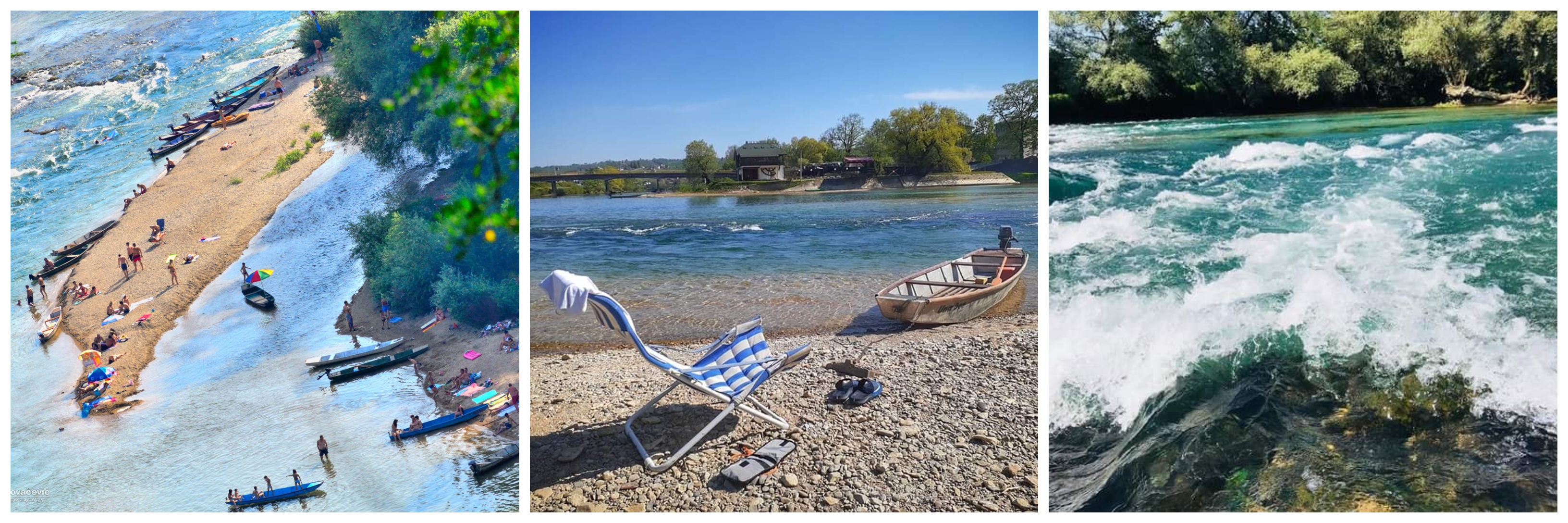
River Una, www.facebook.com/castrum.novum.35
Rivers Una and Sana are significant water potential of this region. The total length of Una river is 207 km, and with its length of 35 km, it flows through Novi Grad . With the whole part of its flows through Novi Grad, Una runs as a border river between the Republic of Srpska (B&H) and Croatia. The largest tributary of Una in this area is Sana river. Novi Grad lies at the confluence of the Una and Sana river, and it is known for its scenic quay (three kilometers and stone-built coastal fort), a promenade which spreads all along with Novi Grad and without it, this town would not be so attractive. Just on the place where Sana flows into Una, there is a peninsula “Ada” which represents the main beach in the town.
Una with its beauty and exoticness leaves no one indifferent. It is known for its attractive green-blue color, as well as natural waterfalls. That is why it is attractive for many water-lovers. There are many beaches in Una, in the town and in rural localities. People from nearby towns often spend their vacation on Una`s beaches. This river is also attractive for water-sports lovers. Una is especially favorable for rowing. Some of the world-famous rowers are from our town. Rafting, very popular sport lately, is also organized on this river- “International Una regatta – across Una by boat“.
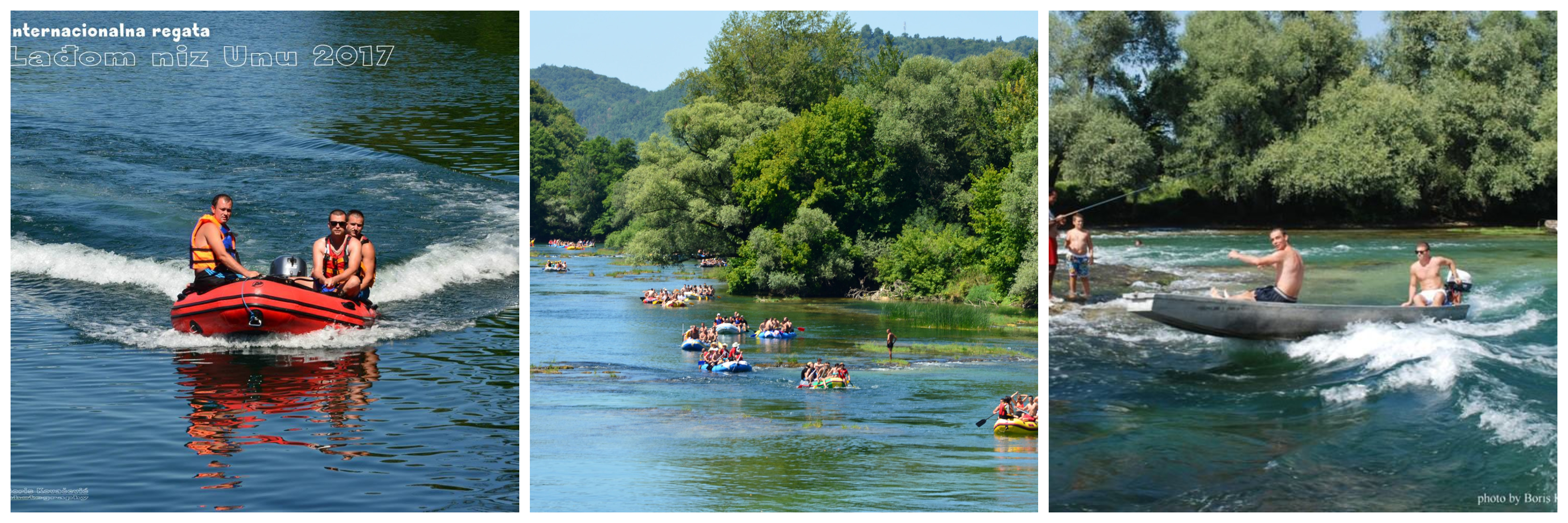
International Una regatta – across Una by boat, photo by Boris Kovačević, www.facebook.com/a.joker.joker
Sana river springs up near Medna in Ribnik municipality and it flows into the Una river in Novi Grad municipality. A legend says that the name has its origin in Latin word „sana“ meaning healthy. Its 16 km long flow through Novi Grad region, starts near village Ahmetovci, parting this region on Podgrmec and Potkozarje. In its upper and central flow, Sana is fast and full of gorges and ravines. In its lower flow, from Prijedor to Novi Grad, Sana is much calmer what makes it very attractive for fishing.
The Event “Days of Sana River” is a traditional event taking place on the World Environment Day ( 5-6 June) in all seven cities that Sana river runs through. The aim of the event is to preserve and protect Sana river and its tributaries, raise awareness of the importance of keeping the environment.
The Event lasts two days, i.e. it starts in Mrkonjić Grad- Ribnik where water is taken at the spring of the Sana river, then an ecologic cup with spring water, symbolically goes through all municipalities of the Sana basin (Mrkonjić Grad, Ribnik, Ključ, Sanski Most, Oštra Luka, Prijedor and Novi Grad), i.e. spring water is running out in Novi Grad at Sana river mouth. Every year one of the municipalities prepares a central event with an appropriate cultural artistic and ecological program.
Rivers Una and Sana with their tributaries are also very attractive for fishing. More information: Sport-fishing society of Novi Grad.
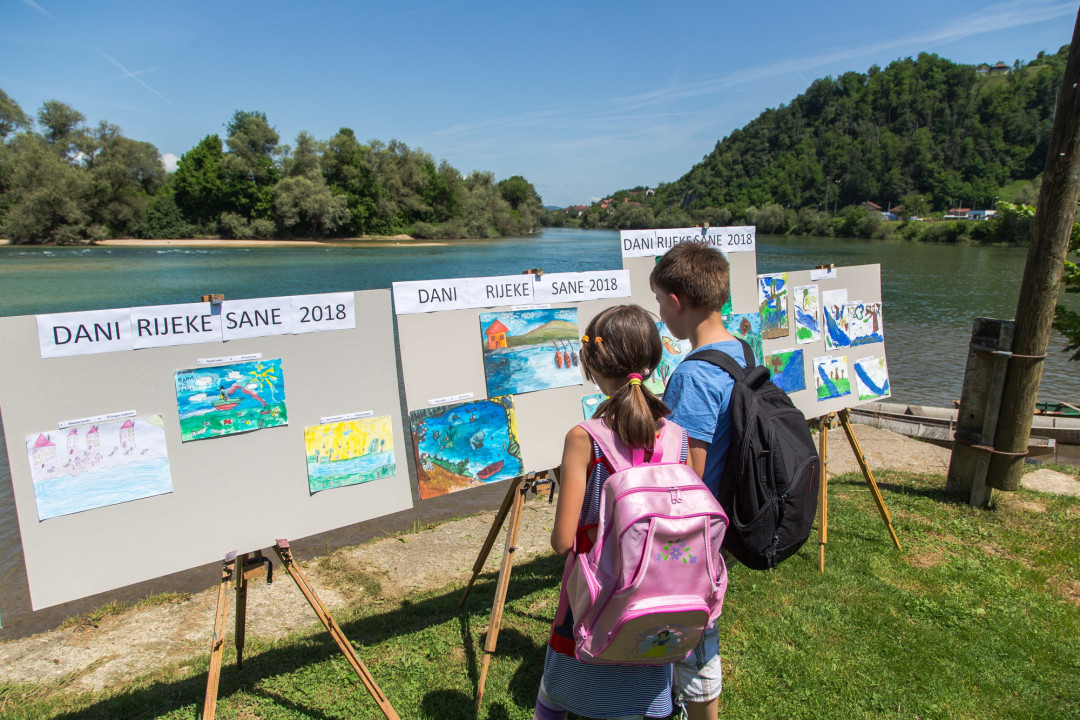
Days of Sana River, www.facebook.com/opstinanovi.grad
CULTURAL AND HISTORICAL POTENTIALS
The cultural and historical potentials of the municipality include: the old City Hall (which is registered as a national monument of BiH), Heritage Museum, the National Library, The memorial “Majka Partizanka” (Partisan Mother), etc.
The ethnic-social potentials of the municipality include folk dances, songs, costumes, handicrafts, domestic gastronomic products, old autochthonous houses of Potkozarje and Podgrmec, etc.

Photo by Boris Kovačević



